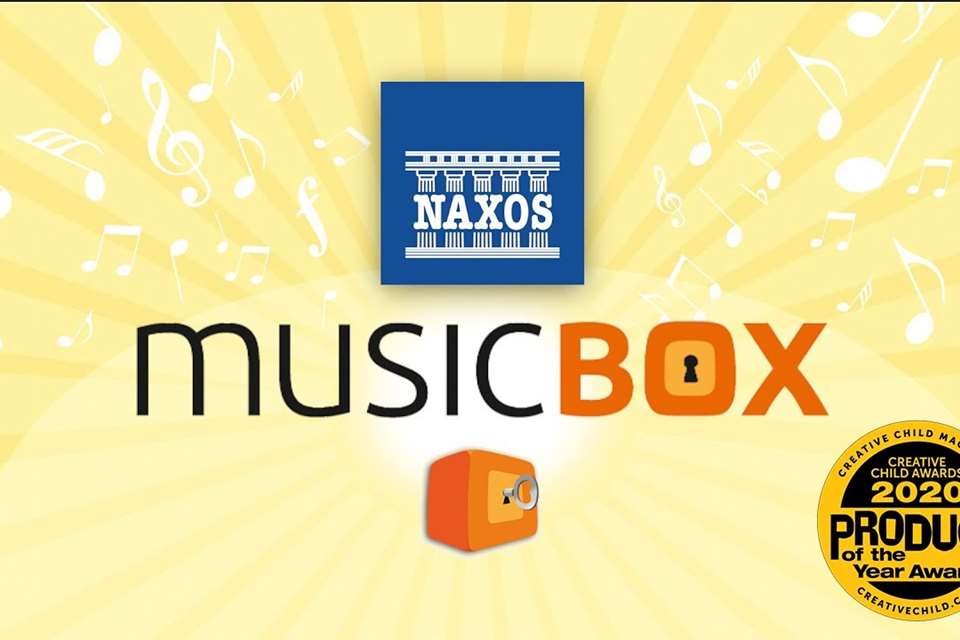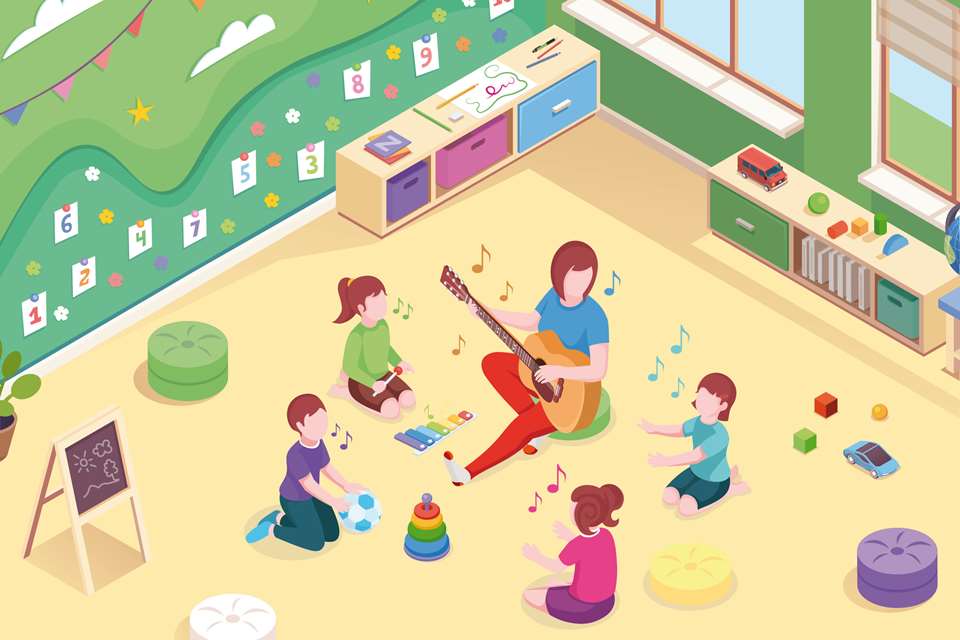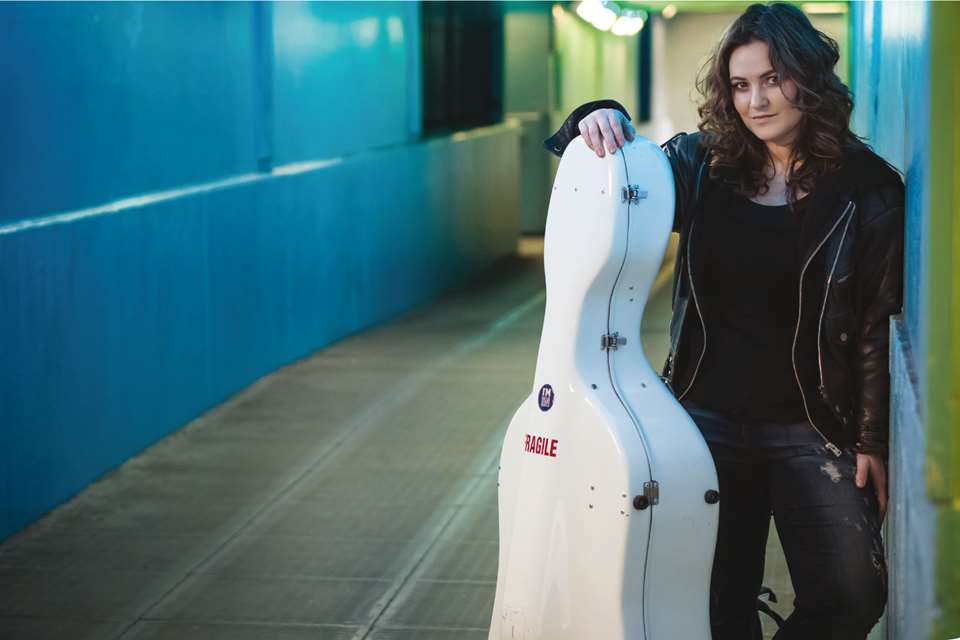Come hell or high water: Virtual performances
David Guinane
Friday, January 1, 2021
Head of music at Beaumont School, David Guinane, went above and beyond to produce a far-reaching virtual performance with his students during lockdown. Here, he honestly reveals the daunting reality of the task and offers some sound advice to his fellow music teachers.
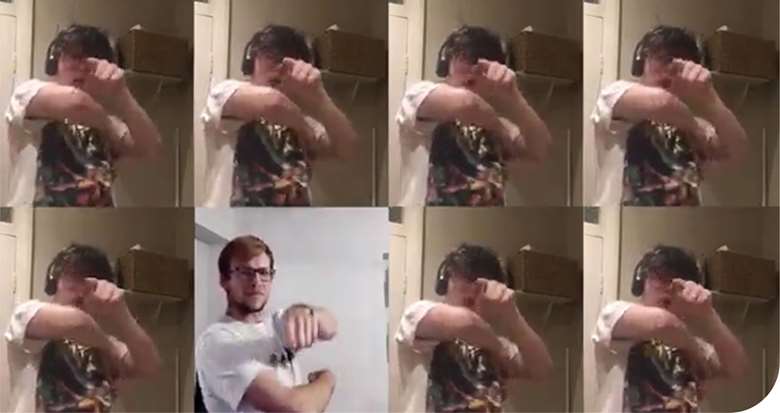
All images: Beaumont School, St Albans
It seems as though everyone's doing it. YouTube is saturated with multi-screen virtual choirs, orchestras, and other remote collaborations. When lockdown hit in March 2020, we used these performances to connect with other musicians when we could not do so in-person. Months later, these performances are still happening as we await a return to music-making ‘as it used to be’. As impressive as these videos are, they are not ‘the answer’ to saving our subject, and for the everyday music teacher, they can be a foreboding prospect.
Under pressure
Speaking to countless colleagues, I have been surprised (though, in retrospect, I shouldn't have been) to hear about pressure put on music teachers to make these videos in lieu of concerts, or other extra-curricular events. Without getting on my soapbox about expectations of music teachers, making a virtual performance, regardless of your technical expertise, is not the same as preparing groups and soloists for a concert.
It uses completely different skills (which you may or may not have), has very different time demands, and is simply a totally different way of working for most classroom teachers. I created my video during lockdown, when I wasn't teaching every day, nor was I running our department's extra-curricular programme. The thought of repeating what I did in June 2020 is now, quite frankly, harrowing. That being said, the story of my school's lockdown video is useful to recount here, and throws up the main challenges and issues with this type of music-making.
A no-brainer
At the start of lockdown, our overarching concern was for our Year 13 students. They were an outstanding cohort, and for them to be robbed of the usual leavers’ events was heart-breaking. Virtual performances were pretty novel back then, and I admit I felt a ‘calling’ to do something with those students in mind. For us, the choice of piece was a no-brainer. We had first performed Baba Yetu, the award-winning theme from the video game Civilisation IV, in 2018. It had been on tour with us as a band arrangement and performed again with added choir as a ‘massed item’ at a few different concerts. If ever a department could be said to have an ‘anthem’, this was it. Everyone knew it, regardless of whether or not they had performed it.
I put out an open call for submissions – my intention was to pool every video and create one huge piece. This was the right thing to do at the time, but there are easier ways of doing it. With over 100 videos submitted, I had to ‘swap-out’ eight videos every four bars (give or take). This was incredibly time consuming. Tracking how many times each person had appeared involved several pieces of paper, many colours of pen, and many mistakes.
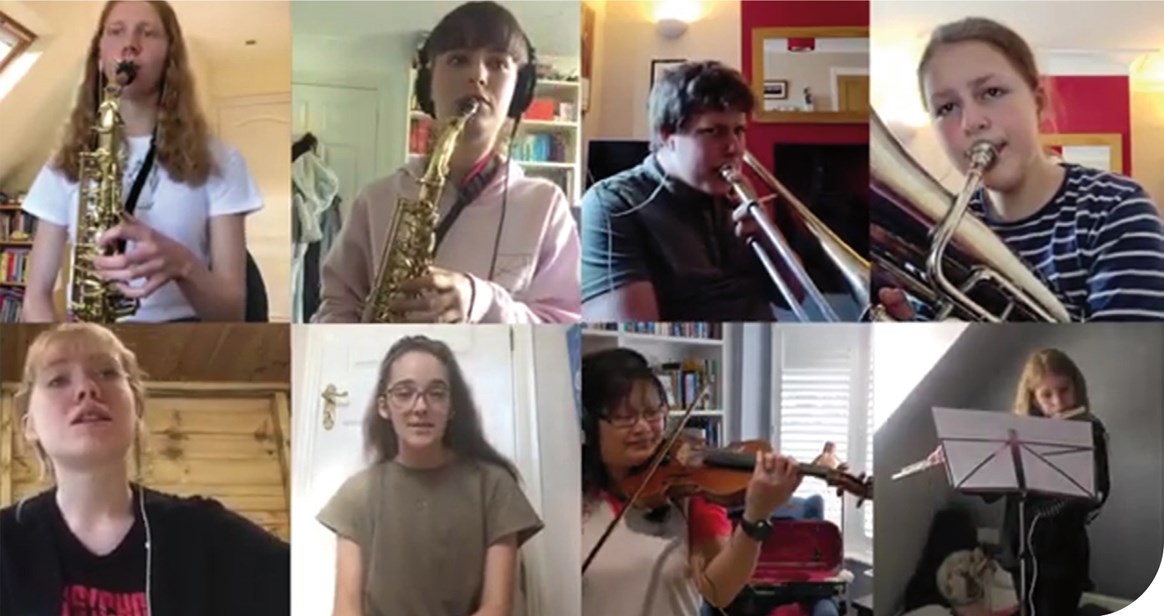
All images: stills from Beaumont School's Baba Yetu lockdown video on YouTube
The practicalities
There are, however, more practical solutions. Smaller ensembles and fewer musicians mean less video editing, as they can stay on screen for longer. Multiple pieces can be delegated to other members of your team to save you time.
We used the ‘sample track’ of the piece; the one you listen to before you decide to purchase an arrangement. This was preferable to click tracks, or conductor videos, as (in theory) students would be more in time and more in tune. It becomes very challenging for young people to synchronise timing and tuning without a reference track like this.
Teaching a brand-new tune to students is also possible, but that requires a new set of resources – isolated parts, recordings with certain parts made louder, or sample recordings. You could enlist anyone delivering peripatetic lessons to help teach the track(s) to students, but this may make the project less inclusive. Either way, ensure students know to record their submission with the guide track played through headphones (using one headphone ‘ear’ can be useful for tuning, especially for singers).
Getting technical
The audio and video editing process is where things become technical. I used Logic and Final Cut on my MacBook Pro, but there are free alternatives available. The specific process for each piece of software is beyond the scope of this article, but there are countless guides online, in either written or video form – just Google ‘virtual choir’ and add qualifiers like ‘free’ or ‘Windows’.
Like many music teachers, this was my first time editing multi-screen video. A Year 13 student, incredibly skilled with music production, mastered the audio, saving me countless hours. I stripped the audio from every video (and added some audio-only submissions), lined them all up in a Logic Project, and from that point my student took over with the mastering. Common issues with the audio include background noise, some EQ issues, and the need to normalise volume and/or use compression. The main tweaks to the videos were cropping and aligning the audio track with the video. Advanced practitioners might look at lighting filters and brightness to tidy up the visuals.
Editing tips
As I've said, specific guidance for each piece of software needs to be sought online. However, there are some universal issues that need addressing. Make sure you have a powerful machine; the run-of-the-mill school laptop will not cut it. Use a personal rig or demand something suitable from those who may be putting pressure on you to produce this stuff.
In my experience, an online tutorial doesn't give you all the tools to troubleshoot effectively when things go wrong. I can't predict what problems the idiosyncrasies of your setup will give you – in my case there were format issues with videos coming from different types of phone, and rendering issues that required certain things to be reset in Final Cut. Be prepared to search online forums and videos on YouTube to give you ideas of things to try if you get stuck.
On the rocks?
The biggest problem I had was my laptop overheating when processing the videos. At one point I thought I wouldn't be able to export the project, and with tears in my eyes nearly gave up. In the end I found software to override the fans on the machine to ensure they were always running at full blast, and I even raised my laptop over a tray of ice to ensure cool air was being drawn into the computer. It worked, and I'm pleased with my ingenuity, but I fear for those who don't have the confidence with technology to deal with problems like this. I've always been ‘techy’, and I struggled hugely with this project.
When the video was complete, we launched it in lieu of a summer concert. YouTube has a ‘premiere’ function, which allows you to set up a landing page and countdown to the video's release. This allowed us to create a buzz around the performance, and combined with our social media, we had a large number of people watching the video concurrently. We even set up a virtual meeting for students to watch it live and share reactions. These are all good ideas.
Our video took on a life of its own, and thanks to a positive reaction from the composer, Christopher Tin, it reached far more people that we ever hoped it would. The piece itself was celebrating an anniversary, and we made it onto a compilation video on YouTube a few months later.
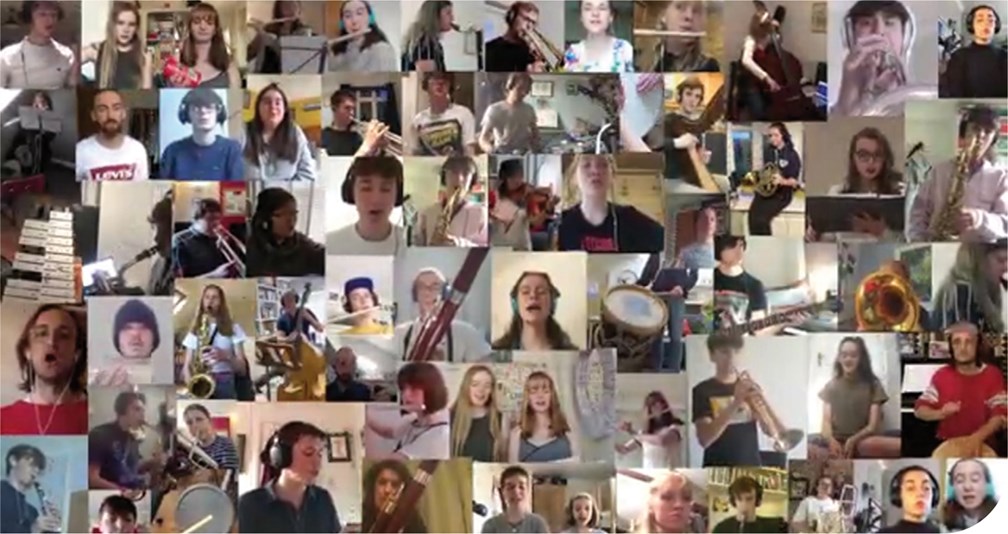
Bittersweet
Looking back, I have mixed feelings about the project. I felt compelled to do it for my students at the height of the first wave of the pandemic. It has been universally well-received. To call it a ‘passion project’ would be an understatement. It was countless hours of work, and not particularly pleasant work at that. It was frustrating, difficult, and very tiring. I feel like it was completed through sheer ‘force of will’, and I didn't even do the audio editing – I know for a fact that my student poured all her time into the project, producing something far beyond anyone's expectations.
Considering another virtual performance project fills me with dread. The first term back in school was one of the most draining periods of my career thus far – the planning of new lessons, the additional concerns of distance learning, and the pressure on both staff and students increased my workload exponentially. I feel for teachers being asked to produce videos of this ilk in addition to their other duties. As teachers we feel a compulsion to do the best by our students; a compulsion that too often negatively effects our work-life balance and well-being.
‘Be realistic’
If you are prepared to go through those of hours of editing for your students, then please go ahead, but do not be afraid to get help if you need it. There are countless companies that have sprung up to ‘do the legwork’ with these virtual performances; you give them the raw data, and they produce the magic. They don't do it late at night after a day of teaching, they have the best equipment, and they do it professionally and quickly. If you are asked to create these videos, I urge you to ask your schools to finance professional help. Be realistic.
A non-specialist could easily see these videos as ‘the answer’ to a post-COVID music education. As much as I am proud of what my department achieved with our video, I am more realistic about the hard work in store for us as we rebuild our subject. The most important work I can do is focus on my classroom teaching, ensuring all students get the best possible musical education, as they have missed out on so much, and continue to do so. First and foremost, we are music teachers, and we must teach music.
Watch Beaumont School's Baba Yetu virtual performance below.


